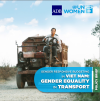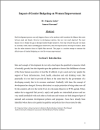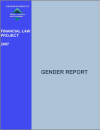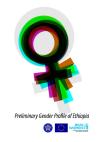Transport is one of the most important aspects of national infrastructure and a key to gender equality. Women’s opportunities to access paid work are reduced when there is poor investment in gender
FOUND 64
This paper provides guidance on how to make Public Finance Management (PFM) reforms gender responsive. It presents an overview of PFM reforms and explains how and why they are important to the achievement of gender equality outcomes.
Well-being gender budgeting (WBGB) experiences use a multidimensional approach for planning and budgeting combining the Capability Approach along with gender responsive budgeting.
This paper is an attempt to measure the effectiveness of Gender Budgeting as a tool for women empowerment. In recent years, Gender Budget Initiatives have emerged as an effective way to bridge gender gaps.
This brief paper has been prepared in accordance with the guidance note from UN Women in consultation with the Equal Opportunities Commission (EOC), Civil Society Budget Advocacy Group (CSBAG) and the
Background paper prepared for the Commonwealth Secretariat by Khabele Matlosa, Research Director, Electoral Institute of Southern Africa (EISA) Johannesburg, South Africa.
The purpose of this paper, prepared by Raman Sohal Research Officer, International Development Research Centre, June 2005, is to present an overview of the existing and potential approaches and tools for identifying gender gaps at the local level.
This paper discusses a wide range of issues related to the topic of gender budgets, including the concept of engendering budgets in relation to poverty, development, macro and micro level economics, the challenges to integrating gender into policy, as well as good governance among other issues.
This Report seeks to make an assessment of policies and practices related to gender-responsive budgeting, by highlighting what was already accomplished and what remains to be done, and by identifying challenges, constraints, opportunities and sectoral challenges.
Ethiopia has prioritized the advancement of gender equality through the development and implementation of the first National Policy on Women in 1993 followed by the promulgation of Constitution in 1995 that calls for equal rights of women, including






